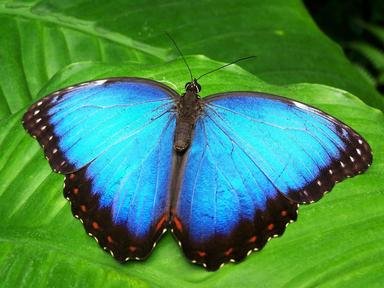Quiz Answer Key and Fun Facts
1. The monarch is probably one of the world's most recognised butterflies. What are its most distinguishing characteristics?
2. The official name for the monarch butterfly is Danaus plexippus. From which language does this name derive?
3. Although its official name is Danaus plexippus, who is acknowledged to be responsible for giving the butterfly its common name of monarch?
4. What type of diet does the monarch butterfly have?
5. Although at a glance both the male and the female look very much alike, what is the distinguishing feature that will identify the male monarch butterfly?
6. Monarch butterflies undergo a four stage life cycle which includes a complete metamorphosis. Approximately how long does this cycle usually take to complete?
7. The range occupied by the monarch butterfly in North America is subject to very cold winters. How does the monarch butterfly cope with these harsh conditions?
8. As a caterpillar, the monarch feeds exclusively on milkweed species. In what way does this restricted diet affect the insect throughout its life?
9. What is acknowledged by scientists to be the biggest threat facing monarch butterflies?
10. The similarity between the monarch and the viceroy butterflies is a well known example of what type of animal behaviour?
Source: Author
KayceeKool
This quiz was reviewed by FunTrivia editor
rossian before going online.
Any errors found in FunTrivia content are routinely corrected through our feedback system.

